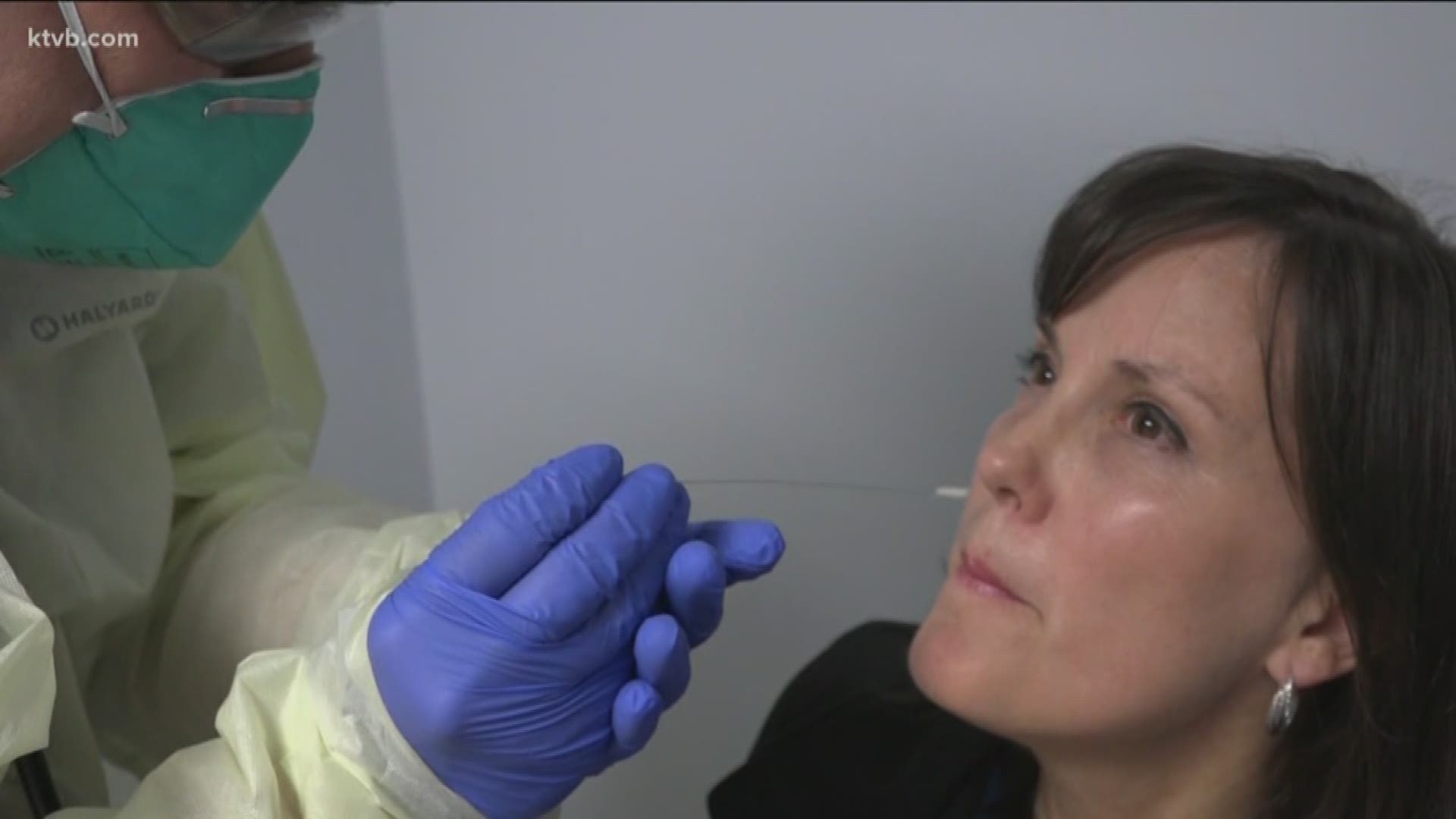BOISE, Idaho — More than 50 days after the first confirmed positive case of COVID-19, the federal government is now promising expedited testing for those who may have been exposed to the virus, with results in as little as 24 to 36 hours.
President Trump promised to increase the number of coronavirus tests being issued during a press conference on Friday, with an additional 1.4 million tests being done by next week and 5 million being done by the end on the month.
A new rapid test may give doctors the opportunity to increase the number of tests being done in states with confirmed cases, but it's not happening yet.
Getting tested for coronavirus, or COVID-19, is a "waiting game" according to officials. If a patient is concerned they may have coronavirus, the first challenge is finding a doctor that will order and mandate the test.
Then, there is an extended waiting period for the results, in many cases 3 to 4 days.
Dr. José Cordero , an Infections Disease Expert at University of Georgia, says the reality of the situation is that these tests take time.
“The sample arrives one day, it’s tested the next, but you also have to have another day or two to get the report back," Cordero said. "“Ideally, we all would like to have a rapid test that could be done at the bedside [but] we don't have that.”
When a patient is tested, the doctor will take two swabs from each patient, one from inside the nose and one from the back of the throat.
Once collected, the samples are frozen and shipped to a Center for Disease Control (CDC) lab, a state health department or a commercial lab. The samples are then processed, usually within 3 to four days, before being sent back to the doctor.
So where are the tests?
According to Atlanta-based investigator Brendan Keefe, doctors don't have tests because it is not a kit sent to the doctor, but a test that labs use.
Doctors are only responsible for collecting the samples but don't actually conduct the test. In addition, the results are not instant like a flu test. It can take several hours to run each test.
This means that results are out of date the minute they arrive to the doctor responsible for collecting a patients sample, according to Keefe. Once results arrive, they only confirm that an individual tested negative three or four days earlier.
At KTVB, we’re focusing our news coverage on the facts and not the fear around the virus. To see our full coverage, visit our coronavirus section, here: www.ktvb.com/coronavirus.
Facts not fear: More on coronavirus
See our latest updates in our YouTube playlist:

